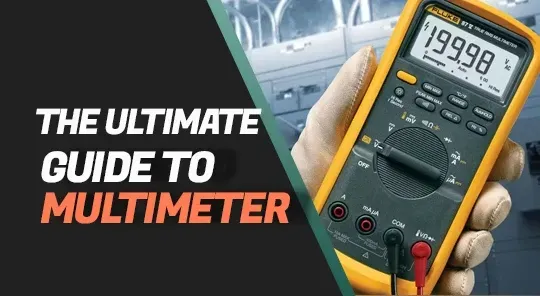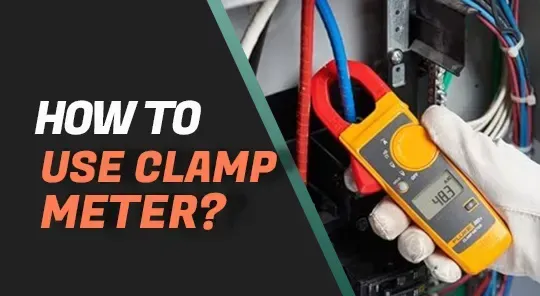What is A Non-Contact Voltage Tester?
Ever found yourself fiddling with electrical wires, wondering if they’re live or not? Enter the non-contact voltage tester, a tool that takes the guesswork out of electrical safety. This handy device allows you to detect voltage in electrical systems without making physical contact. Let’s dive into what makes this tool a must-have for both DIY enthusiasts and professional electricians.

How Does a Non-Contact Voltage Tester Work?
A non-contact voltage tester is like a magic wand for detecting electrical current, operating on the principles of capacitance and electromagnetic fields. When brought near a live wire, the tester senses the electric field produced by the voltage and signals its presence through a light or sound indicator. Key components include a sensor tip, a signaling mechanism (usually LED lights or beepers), and a power source, typically batteries.
Non-contact voltage testers detect a small amount of current that is capacitively coupled from the live circuit to the tester and back to ground. This allows them to light up and alert you to the presence of voltage without needing direct contact. The built-in sensor at the tip of the tester detects voltage when near a conductor, outlet, or supply cord. By holding the tool, you act as the ground reference through capacitive coupling. When the tip glows red and the unit beeps, it indicates that voltage is present.
Advantages of Using non contact voltage detector
Why should you choose a non-contact voltage tester? Here are a few strong reasons:
- Safety: One of the biggest benefits is safety. Since you don't need to touch live wires, the risk of getting an electric shock is greatly minimized. This makes it a crucial tool for both DIY enthusiasts and professionals who prioritize safety.
- Ease of Use: Non-contact voltage testers are incredibly user-friendly. You just need to bring the tester close to a wire or outlet, and it will detect the voltage for you. There's no need for any technical know-how or complicated setup, making it accessible to everyone.
- Versatility: These testers are versatile and can be used in a wide range of situations. Whether you're doing simple home repairs, checking an outlet, or conducting a professional electrical inspection, a non-contact voltage tester is up to the task. It's useful in residential, commercial, and industrial settings.
- Time-Saving: Because you don't have to disconnect wires or shut off power to test for voltage, these devices save you time. This efficiency is especially beneficial for professionals who need to perform multiple checks quickly.
- Portability: Non-contact voltage testers are usually compact and lightweight, making them easy to carry around in your pocket or tool belt. Their portable nature means you can have them on hand whenever you need them.
- Reliability: Modern non-contact voltage testers are highly reliable and can provide accurate readings under various conditions. They are built to withstand tough environments and deliver consistent performance.
- Non-Invasive Testing: Since there's no need to strip wires or dismantle devices, non-contact voltage testers allow for non-invasive testing. This helps maintain the integrity of the electrical system and avoids unnecessary damage.
- Cost-Effective: Investing in a non-contact voltage tester can save you money in the long run. By quickly identifying live wires, you can prevent accidents and avoid costly repairs caused by electrical faults.
- Quick Verification: For quick checks and verification, these testers are unbeatable. They can immediately tell you if a circuit is live or not, which is extremely handy during troubleshooting and maintenance tasks.
- Enhanced Features: Many modern non-contact voltage testers come with additional features such as built-in flashlights, different sensitivity settings, and audible alerts, making them even more convenient and efficient to use.

Applications of Non-Contact Voltage Testers
Non-contact voltage testers are versatile tools that can be used in a variety of scenarios:
- Home Electrical Maintenance: These testers are perfect for determining if wires or outlets are live before you begin any DIY projects. They help ensure safety by confirming the presence of voltage without direct contact.
- Professional Inspections: Electricians rely on these devices for quick, preliminary checks in different environments. They are essential for efficiently identifying live circuits during routine inspections or troubleshooting electrical issues.
- Industrial and Commercial Settings: Non-contact voltage testers are indispensable in industrial and commercial environments. They help maintain safety by allowing workers to check for live wires in complex electrical systems without needing to touch the components directly.
- Automotive Electrical Work: These testers can be used to check the electrical systems in vehicles, ensuring that circuits are live and functioning properly, which is essential for vehicle maintenance and repair.
- Educational Purposes: In educational settings, non-contact voltage testers are valuable tools for teaching students about electrical safety and circuitry. They provide a hands-on learning experience without the risk of electric shock.
- HVAC Systems: HVAC technicians use non-contact voltage testers to check electrical connections and components in heating, ventilation, and air conditioning systems, ensuring they are safe and operational.
- DIY Enthusiasts: For hobbyists working on electronics or small electrical projects, these testers offer a convenient and safe way to check for live circuits, enhancing the overall safety of their work environment.
- Emergency Situations: In emergencies where quick electrical assessments are needed, non-contact voltage testers provide a rapid way to identify live wires, aiding in swift and safe resolution of electrical hazards.
Choosing the Best Non-Contact Voltage Tester
Selecting the right non-contact voltage tester involves considering several important factors:
- Key Features: Prioritize testers that have clear and visible indicators, such as bright LED lights or audible beeps, to ensure you can easily detect voltage. Look for durable construction to withstand regular use, and high sensitivity to accurately detect a wide range of voltages. Some advanced models may also offer additional features like adjustable sensitivity, built-in flashlights, or dual-range detection for both low and high voltages.
- Brand Reputation: Choose brands that are well-known and trusted in the industry. Brands with a solid reputation for quality and reliability are more likely to provide accurate and long-lasting tools. Additionally, reputable brands often offer better customer support, warranties, and user manuals, which can be invaluable if you encounter any issues with your tester.
- Price vs. Quality: While it might be tempting to opt for the least expensive option, consider the long-term benefits of investing in a higher-quality tester. Cheaper models may lack the durability, accuracy, and reliability needed for safe and effective use. A quality tester, though potentially more costly upfront, can save you time, reduce the risk of errors, and provide a longer service life.
- Ease of Use: Ensure the tester is user-friendly, with simple operation and clear instructions. A tester that is easy to use will make your tasks more efficient and reduce the likelihood of mistakes. Ergonomic designs and comfortable grips can also enhance the user experience, especially during prolonged use.
- Battery Life: Consider the battery life of the tester. Models with longer battery life reduce the need for frequent replacements and ensure the tester is ready to use when you need it. Some testers may also have low-battery indicators to alert you when it’s time to change the batteries.
- Safety Certifications: Look for testers that meet recognized safety standards and certifications. Compliance with safety standards such as CE, UL, or IEC ensures that the tester has been tested and approved for safe use.
- Versatility: Some testers come with additional functions that can be useful for various applications. For example, a tester that can detect both AC and DC voltage, or one that can measure continuity, might provide added value and versatility.
- Customer Reviews: Reading customer reviews and ratings can provide insights into the performance and reliability of different models. User experiences can highlight potential issues or advantages that might not be evident from the product description alone.
- Warranty and Support: Opt for testers that come with a warranty and reliable customer support. A good warranty can provide peace of mind, knowing that you are covered in case of defects or malfunctions. Access to customer support can also be helpful if you have questions or need assistance with your tester.
How to use a non contact voltage tester on wires
- Familiarize Yourself with the Tester
- Turn on the Voltage Tester
- Test the Tester on a Known Live Source
- Hold the Tester Close to the Wire
- Adjust the Sensitivity (If Necessary)
- Interpret the Results
Conclusion
In conclusion, a non-contact voltage tester is an indispensable tool for anyone dealing with electrical systems, from DIY enthusiasts to professional electricians. Its ability to detect voltage without direct contact ensures a high level of safety, ease of use, and versatility. Whether you're working on home electrical maintenance, conducting professional inspections, or tackling industrial applications, a non-contact voltage tester provides a reliable and efficient solution. By investing in a quality tester with the right features, brand reputation, and safety certifications, you can ensure accurate readings and long-term durability. This small, portable device not only enhances safety and efficiency but also offers peace of mind, making it an essential addition to your toolkit.






